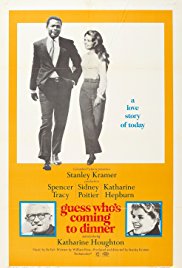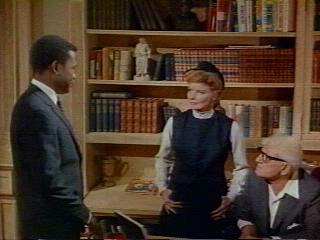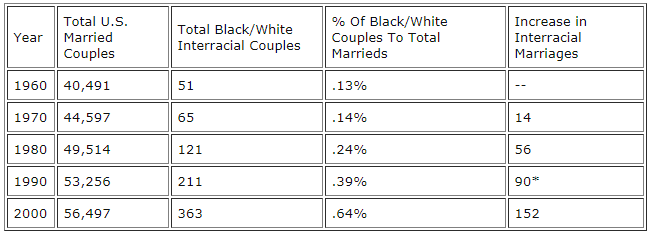GUESS WHO’S COMING TO DINNER
SUBJECTS — U.S./1945 – 1991 & Diversity/African-American;
SOCIAL-EMOTIONAL LEARNING — Families in Crisis;
MORAL-ETHICAL EMPHASIS — Respect.
AGE: 10+; No MPAA Rating;
Comedy; 1967; 108 minutes; Color.
There is NO AI content on this website. All content on TeachWithMovies.org has been written by human beings.

SUBJECTS — U.S./1945 – 1991 & Diversity/African-American;
SOCIAL-EMOTIONAL LEARNING — Families in Crisis;
MORAL-ETHICAL EMPHASIS — Respect.
AGE: 10+; No MPAA Rating;
Comedy; 1967; 108 minutes; Color.
Give your students new perspectives on race relations, on the history of the American Revolution, and on the contribution of the Founding Fathers to the cause of representative democracy. Check out TWM’s Guide:
Set in the 1960s, this movie tells of a dinner party given by a bride’s parents to meet her fiancé (a doctor, no less) and his parents. The bride’s white parents are astonished to find that the groom is black and the groom’s parents are none too happy when they discover that the bride is a white girl.
Selected Awards: 1967 Academy Awards: Best Actress (Hepburn), Best Original Screenplay; 1968 British Academy Awards: Best Actor (Tracey), Best Actress (Hepburn); 1966 Academy Awards Nominations: Best Picture, Best Actor (Tracey), Best Supporting Actor (Kellaway); Best Supporting Actress (Richards); Best Art Direction-Set Decoration; Best Director (Kramer); Best Film Editing. This film is ranked #99 on the American Film Institute’s List of the 100 Greatest American Movies of All Time (2006).
Featured Actors: Katherine Hepburn, Spencer Tracey, Sidney Poitier, Katharine Houghton, Cecil Kellaway, Beah Richards, Roy E. Glenn, Sr.
Director: Stanley Kramer.

This comedy explores interracial marriage, a subject still controversial among many people.
None.
This film will likely seem outdated to young people. Your child should know that this was a break-through movie when it was released and that it was part of a national dialogue about race. The actors and actresses in the film were very popular at the time, a fact that helped give the film credibility. You may want to talk to your child about inter-racial dating or even inter-racial friendships that may be occurring in your child’s school or social life. You may want to note that the character played by Sidney Poitier was highly educated and wealthy, two factors that smoothed the way for his acceptance in the family. To get to the heart of the issue, ask and help your child to answer the Quick Discussion Question.
The number of interracial marriages in the U.S. has increased dramatically since the 1960s both in numbers and in the percentage of total marriages. The table below tells the story beginning in 1980. All numbers are in thousands. Source: U.S. Census, Fertility and Family Statistics Branch. All numbers are in the thousands.

[*There is a discrepancy in the way of counting between the 1980 – 1990
statistics and the 2000 statistics which we don’t entirely understand.]
Interracial marriage is concentrated in urban areas. People in urban areas will instinctively feel that these statistics understate the number of interracial marriages. People in non-urban areas may feel the opposite. The trend is expected to continue as barriers of prejudice continue to fall.
Until 1967, when the United States Supreme Court declared anti-miscegenation laws unconstitutional, mixed-race marriages were illegal in some states. See Learning Guide to “Show Boat“.
1. See Discussion Questions for Use With any Film that is a Work of Fiction.
2. Why was it difficult for the parents to accept the fact that their child wanted to marry someone of a different race?
3. How would your parents react if you wanted to marry someone of a different race? How would you react if your children brought home someone of a different race? Would it make a difference which race? Why?
4. What do you think your parents would do if you brought home a boyfriend/girlfriend of a different religion? Would it make a difference which religion? Why?
5. Some say that in several hundred years, most Americans will have blood in them from all races and will be a shade of light brown. Do you agree that this will happen? What are the benefits and the detriments if this occurs?
6. What are the necessary components for a lasting marriage? In light of your answer, how do you think the marriage described in this film would have lasted?
7. The father of the bride thought of himself as a “liberal” and enlightened in matters of race relations. However, at least initially, when it came to his own family, he had a lot of difficulty dealing with the consequences of his enlightened philosophy. What is this divergence between expressed philosophy and action called? Give some other examples of it.
8. Think about how this film shows how, in a society such as the U.S., racial and ethnic divisions break down and a new identity arises. Rather than thinking of themselves as Irish-American or African-American, the children found in each other shared values and a similar outlook and philosophy which were more important to them than their differences of race. Think about the marriages that you know which cross racial or religious lines. What are the shared values and similarities which make those marriages work?
1. For each of the four parents in this film, describe how they interacted with their spouse to resolve the crisis presented by the pending marriage and what techniques of conflict resolution, if any, did they use?
2. For each of the two children, how did they manage their parents? While both lobbied for their cause, were there any psychological tactics that they used on their parents to reconcile them to the marriage? Describe what they were and how they were employed.
Discussion Questions Relating to Ethical Issues will facilitate the use of this film to teach ethical principles and critical viewing. Additional questions are set out below.
(Treat others with respect; follow the Golden Rule; Be tolerant of differences; Use good manners, not bad language; Be considerate of the feelings of others; Don’t threaten, hit or hurt anyone; Deal peacefully with anger, insults, and disagreements)
1. Does the Ethical Decision-Making Model suggested by the Josephson Institute of Ethics help you answer either part of the preceding question? See Making Ethical Decisions. Justify your conclusion.
2. Is it true that the only stakeholders in a decision to marry are the couple to be married?
miscegenation; interracial marriage. See also English Learner Movie Guide to “Guess Who’s Coming to Dinner” from ESLnotes.com.
(1) Does respect for another racial or ethnic group require that if your children were to marry into that group you would approve of the marriage, or, can you both respect another racial or ethnic group and also desire that, in your family, your traditions be maintained and your children marry into what you consider to be your own racial or ethnic group? (2) If your answer to this question is that you can respect a racial or ethnic group but not want your children to marry into it in order to maintain your family traditions, would you go so far as to reject a child (and a daughter-in-law or son-in-law) if your child fell in love with a person in another racial or ethnic group and wanted to marry that person? Note that there are two levels of respect in each of the two questions to be answered. One is respect for people in another racial or ethnic group and the other is respect for the wishes and decisions of your own child.
Suggested Response:
(1) There is no one correct answer to the first question. (2) As to the second question, there is no basis to reject a child for marrying into another racial or ethnic group. You don’t have to agree with their practices or lifestyle but you can still love your child.
Photographs of Signs Enforcing Racial Discrimination: Documentation by Farm Security Administration-Office of War Information Photographers from the Library of Congress.
“I say that the best way to address this issue is to address it forthrightly, and straightforwardly, and embrace the complicated history and the complicated presence of America. On the one hand, that’s right, slavery, and segregation, and racism, and white supremacy is deeply entrenched in America. At the same time, there has been a tremendous alternative tradition, a tradition against slavery, a tradition against segregation, a tradition against racism.
I mean, after all in the past 25 years, the United States of America has seen an African-American presence. As we speak, there is an African-American vice president. As we speak, there’s an African- American who is in charge of the Department of Defense. So we have a complicated situation. And I think the best way of addressing our race question is to just be straightforward, and be clear, and embrace the tensions, the contradictions, the complexities of race in American life. I think we need actually a new vocabulary.
So many of the terms we use, we use these terms over and over, starting with racism, structural racism, critical race theory. These words actually have been weaponized. They are vehicles for propaganda. I think we would be better off if we were more concrete, we talked about real problems, and we actually used a language that got us away from these overused terms that actually don’t mean that much. From Fahreed Zakaria, Global Public Square, CNN, December 26, 2021
Give your students new perspectives on race relations, on the history of the American Revolution, and on the contribution of the Founding Fathers to the cause of representative democracy. Check out TWM’s Guide: TWO CONTRASTING TRADITIONS RELATING TO RACISM IN AMERICA and a Tragic Irony of the American Revolution: the Sacrifice of Freedom for the African-American Slaves on the Altar of Representative Democracy.
* we respect your privacy. no spam here!